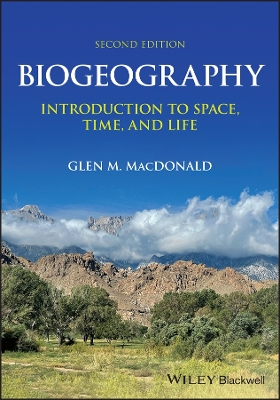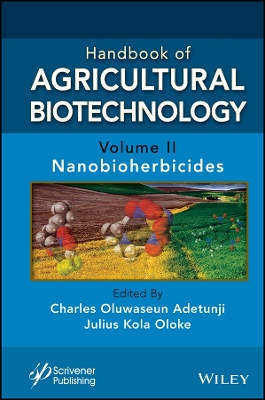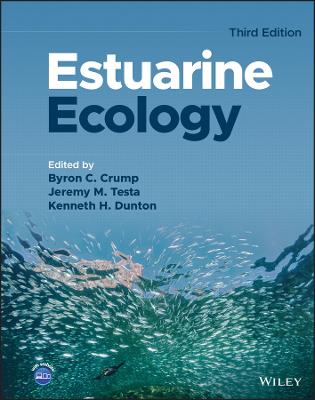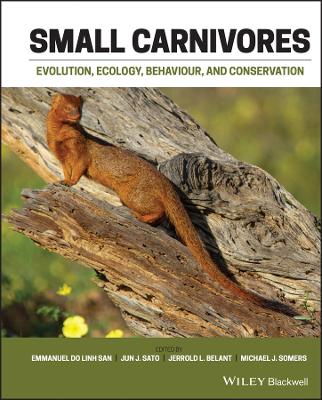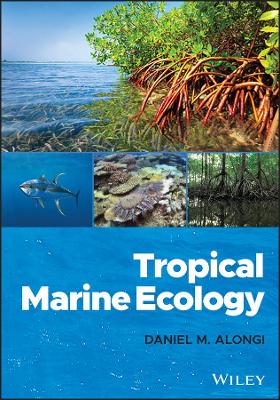Chemical Ecology of Insect Parasitoids
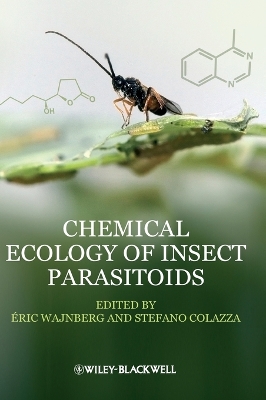 -15%
portes grátis
-15%
portes grátis
Chemical Ecology of Insect Parasitoids
Colazza, Stefano; Wajnberg, Eric
John Wiley and Sons Ltd
05/2013
328
Dura
Inglês
9781118409527
15 a 20 dias
804
Descrição não disponível.
Contributors xi 1 Chemical ecology of insect parasitoids: towards a new era 1
Stefano Colazza and Eric Wajnberg
Abstract 1
1.1 Introduction 1
1.2 Integrating behavioural ecology and chemical ecology in insect parasitoids 3
1.3 The use of chemical ecology to improve the efficacy of insect parasitoids in biological control programmes 4
1.4 Overview 5
1.5 Conclusions 6
Acknowledgements 6
References 7
Part 1 Basic concepts 9
2 Plant defences and parasitoid chemical ecology 11
Paul J. Ode
Abstract 11
2.1 Introduction 12
2.2 Plant defences against a diversity of attackers 13
2.2.1 Plant defence signalling pathways 13
2.2.2 Plant volatiles and parasitoids 16
2.2.3 Plant toxins and parasitoids 18
2.2.4 Cross-talk between plant defence pathways 21
2.3 Above-ground-below-ground interactions and parasitoids 24
2.4 Climate change and parasitoid chemical ecology 25
2.5 Conclusions 28
Acknowledgements 28
References 28
3 Foraging strategies of parasitoids in complex chemical environments 37
Nicole Waeschke, Torsten Meiners and Michael Rostas
Abstract 37
3.1 Introduction 37
3.2 Chemical complexity 40
3.2.1 Plant species diversity and habitat location 40
3.2.2 Variability in host plant traits and their effects on parasitoid host location 42
3.3 Foraging strategies of parasitoids in chemically complex environments 48
3.3.1 Behavioural responses to chemical complexity 48
3.3.2 Learning, sensory fi lters and neural constraints affecting strategies for dealing with complexity 50
3.3.3 Infl uences of life history traits on foraging strategy 51
3.4 Conclusions 53
References 54
4 Chemical ecology of insect parasitoids in a multitrophic above- and below-ground context 64
Roxina Soler, T. Martijn Bezemer and Jeffrey A. Harvey
Abstract 64
4.1 Introduction 65
4.2 Influence of root feeders on above-ground insect herbivores 67
4.3 Influence of soil-borne symbionts on above-ground insect herbivores 69
4.4 Plant-mediated effects of root feeders and soil-borne symbionts on growth and development of parasitoids 70
4.5 Effects of root-feeding insects on HIPVs and host location of parasitoids 74
4.6 Expanding an above-below-ground bitrophic reductionist perspective 76
Acknowledgement 79
References 79
5 A hitch-hiker's guide to parasitism: the chemical ecology of phoretic insect parasitoids 86
Martinus E. Huigens and Nina E. Fatouros
Abstract 86
5.1 Phoresy 87
5.2 Prevalence of phoretic parasitoids 87
5.3 Important parasitoid and host traits 90
5.3.1 Parasitoid traits 90
5.3.2 Host traits 92
5.4 Chemical espionage on host pheromones 93
5.4.1 Espionage on male aggregation pheromone 93
5.4.2 Espionage on sex pheromones 98
5.4.3 Espionage on anti-sex pheromones 99
5.5 Coevolution between phoretic spies and hosts 100
5.6 Biological control 103
5.7 Future perspectives 103
Acknowledgements 104
References 105
6 Novel insights into pheromone-mediated communication in parasitic hymenopterans 112
Joachim Ruther
Abstract 112
6.1 Introduction 113
6.2 Pheromones and sexual behaviour 119
6.2.1 Volatile sex attractants 119
6.2.2 Female-derived courtship pheromones 124
6.2.3 Male-derived courtship pheromones 127
6.3 Other pheromones 128
6.3.1 Marking pheromones 128
6.3.2 Putative alarm and appeasement pheromones 129
6.3.3 Aggregation pheromones 130
6.3.4 Anti-aggregation pheromones 130
6.4 Variability in pheromone-mediated sexual behaviour 131
6.4.1 Innate plasticity of pheromone behaviour 131
6.4.2 Learnt plasticity of pheromone behaviour 131
6.4.3 Plasticity of pheromone behaviour caused by abiotic factors 132
6.5 Pheromone biosynthesis 132
6.6 Evolution of parasitoid sex pheromones 133
6.7 Conclusions and outlook 135
References 136
7 Chemical ecology of tachinid parasitoids 145
Satoshi Nakamura, Ryoko T. Ichiki and Yooichi Kainoh
Abstract 145
7.1 Introduction 146
7.2 Long-range orientation 155
7.2.1 Long-range orientation by direct type parasitoids 155
7.2.2 Long-range orientation by indirect type parasitoids 157
7.2.3 Host pheromones used by direct type parasitoids 158
7.3 Short-range orientation 159
7.3.1 Short-range orientation by direct type parasitoids 159
7.3.2 Short-range orientation by indirect type parasitoids 161
7.4 Conclusions 163
Acknowledgements 163
References 164
8 Climate change and its effects on the chemical ecology of insect parasitoids 168
Jarmo K. Holopainen, Sari J. Himanen and Guy M. Poppy
Abstract 168
8.1 On climate change and chemical ecology 169
8.2 Direct climate change impacts on parasitoids 171
8.3 Climate change and bottom-up impacts on parasitoids: herbivore host and plant host quality 172
8.4 Impacts of climate change-related abiotic stresses on parasitoid ecology and behaviour 175
8.4.1 Impacts of elevated temperature 175
8.4.2 Precipitation and drought 176
8.4.3 Gaseous reactive air pollutants 177
8.4.4 Atmospheric CO2 concentration 179
8.4.5 Parasitoid response to combined abiotic stresses 180
8.5 Climate change impacts on biological control 181
8.6 Ecosystem services provided by parasitoids: impact of changing climate 182
8.7 Future research directions and conclusions 184
References 185
Part 2 Applied concepts 191
9 Chemical ecology of insect parasitoids: essential elements for developing effective biological control programmes 193
Torsten Meiners and Ezio Peri
Abstract 193
9.1 Introduction 194
9.2 Essential elements in parasitoid chemical ecology 196
9.3 Manipulation of the population levels of natural enemies by semiochemicals 201
9.4 Limits and perspectives of behavioural manipulation of parasitoids by applying semiochemicals 204
9.5 Cautionary example: interspecifi c competitive interactions in parasitoids 210
9.6 Conclusions 212
References 213
10 The application of chemical cues in arthropod pest management for arable crops 225
Maria Carolina Blassioli-Moraes, Miguel Borges and Raul Alberto Laumann
Abstract 225
10.1 Arable crops: characteristics of the systems and trophic interactions mediated by chemical cues 226
10.2 Methodologies for using chemical cues to attract and retain parasitoids in arable crops 227
10.2.1 Direct application of semiochemicals 228
10.2.2 Environmental manipulation 236
10.3 Final considerations 237
Acknowledgements 239
References 239
11 Application of chemical cues in arthropod pest management for orchards and vineyards 245
Stefano Colazza, Ezio Peri and Antonino Cusumano
Abstract 245
11.1 Introduction 246
11.2 Pheromone-based tactics in orchards and vineyards 247
11.2.1 Host sex pheromones 247
11.2.2 Parasitoid pheromones 248
11.3 Allelochemical-based manipulation in orchards and vineyards 249
11.3.1 Herbivore-induced plant volatiles (HIPVs) 249
11.3.2 Host-associated volatiles (HAVs) 257
11.4 Conclusions 260
Acknowledgement 261
References 261
12 Application of chemical cues in arthropod pest management for organic crops 266
Marja Simpson, Donna M.Y. Read and Geoff M. Gurr
Abstract 266
12.1 Introduction: organic farming and compatibility of chemical cues 267
12.2 Overview of plant defences involving plant volatiles 268
12.3 The use of synthetic HIPVs in pest management 269
12.4 Arthropod pest management strategies used in organic farming 273
12.5 Potential for extending chemical cue use in organic systems 275
12.6 Conclusions 277
References 277
13 Application of chemical cues in arthropod pest management for forest trees 282
Timothy D. Paine
Abstract 282
13.1 Forest insect herbivores and natural enemy host/prey finding 283
13.2 Introduction to forest systems 285
13.3 Examples from North America 287
13.3.1 Native bark beetles in plantation and unmanaged forests 287
13.3.2 Introduced defoliator in urban and unmanaged forests 288
13.3.3 Introduced wood borer in plantation and urban environments 289
13.4 Conclusions 290
References 291
Index 296
Stefano Colazza and Eric Wajnberg
Abstract 1
1.1 Introduction 1
1.2 Integrating behavioural ecology and chemical ecology in insect parasitoids 3
1.3 The use of chemical ecology to improve the efficacy of insect parasitoids in biological control programmes 4
1.4 Overview 5
1.5 Conclusions 6
Acknowledgements 6
References 7
Part 1 Basic concepts 9
2 Plant defences and parasitoid chemical ecology 11
Paul J. Ode
Abstract 11
2.1 Introduction 12
2.2 Plant defences against a diversity of attackers 13
2.2.1 Plant defence signalling pathways 13
2.2.2 Plant volatiles and parasitoids 16
2.2.3 Plant toxins and parasitoids 18
2.2.4 Cross-talk between plant defence pathways 21
2.3 Above-ground-below-ground interactions and parasitoids 24
2.4 Climate change and parasitoid chemical ecology 25
2.5 Conclusions 28
Acknowledgements 28
References 28
3 Foraging strategies of parasitoids in complex chemical environments 37
Nicole Waeschke, Torsten Meiners and Michael Rostas
Abstract 37
3.1 Introduction 37
3.2 Chemical complexity 40
3.2.1 Plant species diversity and habitat location 40
3.2.2 Variability in host plant traits and their effects on parasitoid host location 42
3.3 Foraging strategies of parasitoids in chemically complex environments 48
3.3.1 Behavioural responses to chemical complexity 48
3.3.2 Learning, sensory fi lters and neural constraints affecting strategies for dealing with complexity 50
3.3.3 Infl uences of life history traits on foraging strategy 51
3.4 Conclusions 53
References 54
4 Chemical ecology of insect parasitoids in a multitrophic above- and below-ground context 64
Roxina Soler, T. Martijn Bezemer and Jeffrey A. Harvey
Abstract 64
4.1 Introduction 65
4.2 Influence of root feeders on above-ground insect herbivores 67
4.3 Influence of soil-borne symbionts on above-ground insect herbivores 69
4.4 Plant-mediated effects of root feeders and soil-borne symbionts on growth and development of parasitoids 70
4.5 Effects of root-feeding insects on HIPVs and host location of parasitoids 74
4.6 Expanding an above-below-ground bitrophic reductionist perspective 76
Acknowledgement 79
References 79
5 A hitch-hiker's guide to parasitism: the chemical ecology of phoretic insect parasitoids 86
Martinus E. Huigens and Nina E. Fatouros
Abstract 86
5.1 Phoresy 87
5.2 Prevalence of phoretic parasitoids 87
5.3 Important parasitoid and host traits 90
5.3.1 Parasitoid traits 90
5.3.2 Host traits 92
5.4 Chemical espionage on host pheromones 93
5.4.1 Espionage on male aggregation pheromone 93
5.4.2 Espionage on sex pheromones 98
5.4.3 Espionage on anti-sex pheromones 99
5.5 Coevolution between phoretic spies and hosts 100
5.6 Biological control 103
5.7 Future perspectives 103
Acknowledgements 104
References 105
6 Novel insights into pheromone-mediated communication in parasitic hymenopterans 112
Joachim Ruther
Abstract 112
6.1 Introduction 113
6.2 Pheromones and sexual behaviour 119
6.2.1 Volatile sex attractants 119
6.2.2 Female-derived courtship pheromones 124
6.2.3 Male-derived courtship pheromones 127
6.3 Other pheromones 128
6.3.1 Marking pheromones 128
6.3.2 Putative alarm and appeasement pheromones 129
6.3.3 Aggregation pheromones 130
6.3.4 Anti-aggregation pheromones 130
6.4 Variability in pheromone-mediated sexual behaviour 131
6.4.1 Innate plasticity of pheromone behaviour 131
6.4.2 Learnt plasticity of pheromone behaviour 131
6.4.3 Plasticity of pheromone behaviour caused by abiotic factors 132
6.5 Pheromone biosynthesis 132
6.6 Evolution of parasitoid sex pheromones 133
6.7 Conclusions and outlook 135
References 136
7 Chemical ecology of tachinid parasitoids 145
Satoshi Nakamura, Ryoko T. Ichiki and Yooichi Kainoh
Abstract 145
7.1 Introduction 146
7.2 Long-range orientation 155
7.2.1 Long-range orientation by direct type parasitoids 155
7.2.2 Long-range orientation by indirect type parasitoids 157
7.2.3 Host pheromones used by direct type parasitoids 158
7.3 Short-range orientation 159
7.3.1 Short-range orientation by direct type parasitoids 159
7.3.2 Short-range orientation by indirect type parasitoids 161
7.4 Conclusions 163
Acknowledgements 163
References 164
8 Climate change and its effects on the chemical ecology of insect parasitoids 168
Jarmo K. Holopainen, Sari J. Himanen and Guy M. Poppy
Abstract 168
8.1 On climate change and chemical ecology 169
8.2 Direct climate change impacts on parasitoids 171
8.3 Climate change and bottom-up impacts on parasitoids: herbivore host and plant host quality 172
8.4 Impacts of climate change-related abiotic stresses on parasitoid ecology and behaviour 175
8.4.1 Impacts of elevated temperature 175
8.4.2 Precipitation and drought 176
8.4.3 Gaseous reactive air pollutants 177
8.4.4 Atmospheric CO2 concentration 179
8.4.5 Parasitoid response to combined abiotic stresses 180
8.5 Climate change impacts on biological control 181
8.6 Ecosystem services provided by parasitoids: impact of changing climate 182
8.7 Future research directions and conclusions 184
References 185
Part 2 Applied concepts 191
9 Chemical ecology of insect parasitoids: essential elements for developing effective biological control programmes 193
Torsten Meiners and Ezio Peri
Abstract 193
9.1 Introduction 194
9.2 Essential elements in parasitoid chemical ecology 196
9.3 Manipulation of the population levels of natural enemies by semiochemicals 201
9.4 Limits and perspectives of behavioural manipulation of parasitoids by applying semiochemicals 204
9.5 Cautionary example: interspecifi c competitive interactions in parasitoids 210
9.6 Conclusions 212
References 213
10 The application of chemical cues in arthropod pest management for arable crops 225
Maria Carolina Blassioli-Moraes, Miguel Borges and Raul Alberto Laumann
Abstract 225
10.1 Arable crops: characteristics of the systems and trophic interactions mediated by chemical cues 226
10.2 Methodologies for using chemical cues to attract and retain parasitoids in arable crops 227
10.2.1 Direct application of semiochemicals 228
10.2.2 Environmental manipulation 236
10.3 Final considerations 237
Acknowledgements 239
References 239
11 Application of chemical cues in arthropod pest management for orchards and vineyards 245
Stefano Colazza, Ezio Peri and Antonino Cusumano
Abstract 245
11.1 Introduction 246
11.2 Pheromone-based tactics in orchards and vineyards 247
11.2.1 Host sex pheromones 247
11.2.2 Parasitoid pheromones 248
11.3 Allelochemical-based manipulation in orchards and vineyards 249
11.3.1 Herbivore-induced plant volatiles (HIPVs) 249
11.3.2 Host-associated volatiles (HAVs) 257
11.4 Conclusions 260
Acknowledgement 261
References 261
12 Application of chemical cues in arthropod pest management for organic crops 266
Marja Simpson, Donna M.Y. Read and Geoff M. Gurr
Abstract 266
12.1 Introduction: organic farming and compatibility of chemical cues 267
12.2 Overview of plant defences involving plant volatiles 268
12.3 The use of synthetic HIPVs in pest management 269
12.4 Arthropod pest management strategies used in organic farming 273
12.5 Potential for extending chemical cue use in organic systems 275
12.6 Conclusions 277
References 277
13 Application of chemical cues in arthropod pest management for forest trees 282
Timothy D. Paine
Abstract 282
13.1 Forest insect herbivores and natural enemy host/prey finding 283
13.2 Introduction to forest systems 285
13.3 Examples from North America 287
13.3.1 Native bark beetles in plantation and unmanaged forests 287
13.3.2 Introduced defoliator in urban and unmanaged forests 288
13.3.3 Introduced wood borer in plantation and urban environments 289
13.4 Conclusions 290
References 291
Index 296
Este título pertence ao(s) assunto(s) indicados(s). Para ver outros títulos clique no assunto desejado.
insect parasitoids; ecology of insect parasitoids; parasitoid chemical ecology; chemical ecology of insect parasitoids; phoretic insect parasitoids; parasitic hymenopterans; tachinid parasitoids;
Contributors xi 1 Chemical ecology of insect parasitoids: towards a new era 1
Stefano Colazza and Eric Wajnberg
Abstract 1
1.1 Introduction 1
1.2 Integrating behavioural ecology and chemical ecology in insect parasitoids 3
1.3 The use of chemical ecology to improve the efficacy of insect parasitoids in biological control programmes 4
1.4 Overview 5
1.5 Conclusions 6
Acknowledgements 6
References 7
Part 1 Basic concepts 9
2 Plant defences and parasitoid chemical ecology 11
Paul J. Ode
Abstract 11
2.1 Introduction 12
2.2 Plant defences against a diversity of attackers 13
2.2.1 Plant defence signalling pathways 13
2.2.2 Plant volatiles and parasitoids 16
2.2.3 Plant toxins and parasitoids 18
2.2.4 Cross-talk between plant defence pathways 21
2.3 Above-ground-below-ground interactions and parasitoids 24
2.4 Climate change and parasitoid chemical ecology 25
2.5 Conclusions 28
Acknowledgements 28
References 28
3 Foraging strategies of parasitoids in complex chemical environments 37
Nicole Waeschke, Torsten Meiners and Michael Rostas
Abstract 37
3.1 Introduction 37
3.2 Chemical complexity 40
3.2.1 Plant species diversity and habitat location 40
3.2.2 Variability in host plant traits and their effects on parasitoid host location 42
3.3 Foraging strategies of parasitoids in chemically complex environments 48
3.3.1 Behavioural responses to chemical complexity 48
3.3.2 Learning, sensory fi lters and neural constraints affecting strategies for dealing with complexity 50
3.3.3 Infl uences of life history traits on foraging strategy 51
3.4 Conclusions 53
References 54
4 Chemical ecology of insect parasitoids in a multitrophic above- and below-ground context 64
Roxina Soler, T. Martijn Bezemer and Jeffrey A. Harvey
Abstract 64
4.1 Introduction 65
4.2 Influence of root feeders on above-ground insect herbivores 67
4.3 Influence of soil-borne symbionts on above-ground insect herbivores 69
4.4 Plant-mediated effects of root feeders and soil-borne symbionts on growth and development of parasitoids 70
4.5 Effects of root-feeding insects on HIPVs and host location of parasitoids 74
4.6 Expanding an above-below-ground bitrophic reductionist perspective 76
Acknowledgement 79
References 79
5 A hitch-hiker's guide to parasitism: the chemical ecology of phoretic insect parasitoids 86
Martinus E. Huigens and Nina E. Fatouros
Abstract 86
5.1 Phoresy 87
5.2 Prevalence of phoretic parasitoids 87
5.3 Important parasitoid and host traits 90
5.3.1 Parasitoid traits 90
5.3.2 Host traits 92
5.4 Chemical espionage on host pheromones 93
5.4.1 Espionage on male aggregation pheromone 93
5.4.2 Espionage on sex pheromones 98
5.4.3 Espionage on anti-sex pheromones 99
5.5 Coevolution between phoretic spies and hosts 100
5.6 Biological control 103
5.7 Future perspectives 103
Acknowledgements 104
References 105
6 Novel insights into pheromone-mediated communication in parasitic hymenopterans 112
Joachim Ruther
Abstract 112
6.1 Introduction 113
6.2 Pheromones and sexual behaviour 119
6.2.1 Volatile sex attractants 119
6.2.2 Female-derived courtship pheromones 124
6.2.3 Male-derived courtship pheromones 127
6.3 Other pheromones 128
6.3.1 Marking pheromones 128
6.3.2 Putative alarm and appeasement pheromones 129
6.3.3 Aggregation pheromones 130
6.3.4 Anti-aggregation pheromones 130
6.4 Variability in pheromone-mediated sexual behaviour 131
6.4.1 Innate plasticity of pheromone behaviour 131
6.4.2 Learnt plasticity of pheromone behaviour 131
6.4.3 Plasticity of pheromone behaviour caused by abiotic factors 132
6.5 Pheromone biosynthesis 132
6.6 Evolution of parasitoid sex pheromones 133
6.7 Conclusions and outlook 135
References 136
7 Chemical ecology of tachinid parasitoids 145
Satoshi Nakamura, Ryoko T. Ichiki and Yooichi Kainoh
Abstract 145
7.1 Introduction 146
7.2 Long-range orientation 155
7.2.1 Long-range orientation by direct type parasitoids 155
7.2.2 Long-range orientation by indirect type parasitoids 157
7.2.3 Host pheromones used by direct type parasitoids 158
7.3 Short-range orientation 159
7.3.1 Short-range orientation by direct type parasitoids 159
7.3.2 Short-range orientation by indirect type parasitoids 161
7.4 Conclusions 163
Acknowledgements 163
References 164
8 Climate change and its effects on the chemical ecology of insect parasitoids 168
Jarmo K. Holopainen, Sari J. Himanen and Guy M. Poppy
Abstract 168
8.1 On climate change and chemical ecology 169
8.2 Direct climate change impacts on parasitoids 171
8.3 Climate change and bottom-up impacts on parasitoids: herbivore host and plant host quality 172
8.4 Impacts of climate change-related abiotic stresses on parasitoid ecology and behaviour 175
8.4.1 Impacts of elevated temperature 175
8.4.2 Precipitation and drought 176
8.4.3 Gaseous reactive air pollutants 177
8.4.4 Atmospheric CO2 concentration 179
8.4.5 Parasitoid response to combined abiotic stresses 180
8.5 Climate change impacts on biological control 181
8.6 Ecosystem services provided by parasitoids: impact of changing climate 182
8.7 Future research directions and conclusions 184
References 185
Part 2 Applied concepts 191
9 Chemical ecology of insect parasitoids: essential elements for developing effective biological control programmes 193
Torsten Meiners and Ezio Peri
Abstract 193
9.1 Introduction 194
9.2 Essential elements in parasitoid chemical ecology 196
9.3 Manipulation of the population levels of natural enemies by semiochemicals 201
9.4 Limits and perspectives of behavioural manipulation of parasitoids by applying semiochemicals 204
9.5 Cautionary example: interspecifi c competitive interactions in parasitoids 210
9.6 Conclusions 212
References 213
10 The application of chemical cues in arthropod pest management for arable crops 225
Maria Carolina Blassioli-Moraes, Miguel Borges and Raul Alberto Laumann
Abstract 225
10.1 Arable crops: characteristics of the systems and trophic interactions mediated by chemical cues 226
10.2 Methodologies for using chemical cues to attract and retain parasitoids in arable crops 227
10.2.1 Direct application of semiochemicals 228
10.2.2 Environmental manipulation 236
10.3 Final considerations 237
Acknowledgements 239
References 239
11 Application of chemical cues in arthropod pest management for orchards and vineyards 245
Stefano Colazza, Ezio Peri and Antonino Cusumano
Abstract 245
11.1 Introduction 246
11.2 Pheromone-based tactics in orchards and vineyards 247
11.2.1 Host sex pheromones 247
11.2.2 Parasitoid pheromones 248
11.3 Allelochemical-based manipulation in orchards and vineyards 249
11.3.1 Herbivore-induced plant volatiles (HIPVs) 249
11.3.2 Host-associated volatiles (HAVs) 257
11.4 Conclusions 260
Acknowledgement 261
References 261
12 Application of chemical cues in arthropod pest management for organic crops 266
Marja Simpson, Donna M.Y. Read and Geoff M. Gurr
Abstract 266
12.1 Introduction: organic farming and compatibility of chemical cues 267
12.2 Overview of plant defences involving plant volatiles 268
12.3 The use of synthetic HIPVs in pest management 269
12.4 Arthropod pest management strategies used in organic farming 273
12.5 Potential for extending chemical cue use in organic systems 275
12.6 Conclusions 277
References 277
13 Application of chemical cues in arthropod pest management for forest trees 282
Timothy D. Paine
Abstract 282
13.1 Forest insect herbivores and natural enemy host/prey finding 283
13.2 Introduction to forest systems 285
13.3 Examples from North America 287
13.3.1 Native bark beetles in plantation and unmanaged forests 287
13.3.2 Introduced defoliator in urban and unmanaged forests 288
13.3.3 Introduced wood borer in plantation and urban environments 289
13.4 Conclusions 290
References 291
Index 296
Stefano Colazza and Eric Wajnberg
Abstract 1
1.1 Introduction 1
1.2 Integrating behavioural ecology and chemical ecology in insect parasitoids 3
1.3 The use of chemical ecology to improve the efficacy of insect parasitoids in biological control programmes 4
1.4 Overview 5
1.5 Conclusions 6
Acknowledgements 6
References 7
Part 1 Basic concepts 9
2 Plant defences and parasitoid chemical ecology 11
Paul J. Ode
Abstract 11
2.1 Introduction 12
2.2 Plant defences against a diversity of attackers 13
2.2.1 Plant defence signalling pathways 13
2.2.2 Plant volatiles and parasitoids 16
2.2.3 Plant toxins and parasitoids 18
2.2.4 Cross-talk between plant defence pathways 21
2.3 Above-ground-below-ground interactions and parasitoids 24
2.4 Climate change and parasitoid chemical ecology 25
2.5 Conclusions 28
Acknowledgements 28
References 28
3 Foraging strategies of parasitoids in complex chemical environments 37
Nicole Waeschke, Torsten Meiners and Michael Rostas
Abstract 37
3.1 Introduction 37
3.2 Chemical complexity 40
3.2.1 Plant species diversity and habitat location 40
3.2.2 Variability in host plant traits and their effects on parasitoid host location 42
3.3 Foraging strategies of parasitoids in chemically complex environments 48
3.3.1 Behavioural responses to chemical complexity 48
3.3.2 Learning, sensory fi lters and neural constraints affecting strategies for dealing with complexity 50
3.3.3 Infl uences of life history traits on foraging strategy 51
3.4 Conclusions 53
References 54
4 Chemical ecology of insect parasitoids in a multitrophic above- and below-ground context 64
Roxina Soler, T. Martijn Bezemer and Jeffrey A. Harvey
Abstract 64
4.1 Introduction 65
4.2 Influence of root feeders on above-ground insect herbivores 67
4.3 Influence of soil-borne symbionts on above-ground insect herbivores 69
4.4 Plant-mediated effects of root feeders and soil-borne symbionts on growth and development of parasitoids 70
4.5 Effects of root-feeding insects on HIPVs and host location of parasitoids 74
4.6 Expanding an above-below-ground bitrophic reductionist perspective 76
Acknowledgement 79
References 79
5 A hitch-hiker's guide to parasitism: the chemical ecology of phoretic insect parasitoids 86
Martinus E. Huigens and Nina E. Fatouros
Abstract 86
5.1 Phoresy 87
5.2 Prevalence of phoretic parasitoids 87
5.3 Important parasitoid and host traits 90
5.3.1 Parasitoid traits 90
5.3.2 Host traits 92
5.4 Chemical espionage on host pheromones 93
5.4.1 Espionage on male aggregation pheromone 93
5.4.2 Espionage on sex pheromones 98
5.4.3 Espionage on anti-sex pheromones 99
5.5 Coevolution between phoretic spies and hosts 100
5.6 Biological control 103
5.7 Future perspectives 103
Acknowledgements 104
References 105
6 Novel insights into pheromone-mediated communication in parasitic hymenopterans 112
Joachim Ruther
Abstract 112
6.1 Introduction 113
6.2 Pheromones and sexual behaviour 119
6.2.1 Volatile sex attractants 119
6.2.2 Female-derived courtship pheromones 124
6.2.3 Male-derived courtship pheromones 127
6.3 Other pheromones 128
6.3.1 Marking pheromones 128
6.3.2 Putative alarm and appeasement pheromones 129
6.3.3 Aggregation pheromones 130
6.3.4 Anti-aggregation pheromones 130
6.4 Variability in pheromone-mediated sexual behaviour 131
6.4.1 Innate plasticity of pheromone behaviour 131
6.4.2 Learnt plasticity of pheromone behaviour 131
6.4.3 Plasticity of pheromone behaviour caused by abiotic factors 132
6.5 Pheromone biosynthesis 132
6.6 Evolution of parasitoid sex pheromones 133
6.7 Conclusions and outlook 135
References 136
7 Chemical ecology of tachinid parasitoids 145
Satoshi Nakamura, Ryoko T. Ichiki and Yooichi Kainoh
Abstract 145
7.1 Introduction 146
7.2 Long-range orientation 155
7.2.1 Long-range orientation by direct type parasitoids 155
7.2.2 Long-range orientation by indirect type parasitoids 157
7.2.3 Host pheromones used by direct type parasitoids 158
7.3 Short-range orientation 159
7.3.1 Short-range orientation by direct type parasitoids 159
7.3.2 Short-range orientation by indirect type parasitoids 161
7.4 Conclusions 163
Acknowledgements 163
References 164
8 Climate change and its effects on the chemical ecology of insect parasitoids 168
Jarmo K. Holopainen, Sari J. Himanen and Guy M. Poppy
Abstract 168
8.1 On climate change and chemical ecology 169
8.2 Direct climate change impacts on parasitoids 171
8.3 Climate change and bottom-up impacts on parasitoids: herbivore host and plant host quality 172
8.4 Impacts of climate change-related abiotic stresses on parasitoid ecology and behaviour 175
8.4.1 Impacts of elevated temperature 175
8.4.2 Precipitation and drought 176
8.4.3 Gaseous reactive air pollutants 177
8.4.4 Atmospheric CO2 concentration 179
8.4.5 Parasitoid response to combined abiotic stresses 180
8.5 Climate change impacts on biological control 181
8.6 Ecosystem services provided by parasitoids: impact of changing climate 182
8.7 Future research directions and conclusions 184
References 185
Part 2 Applied concepts 191
9 Chemical ecology of insect parasitoids: essential elements for developing effective biological control programmes 193
Torsten Meiners and Ezio Peri
Abstract 193
9.1 Introduction 194
9.2 Essential elements in parasitoid chemical ecology 196
9.3 Manipulation of the population levels of natural enemies by semiochemicals 201
9.4 Limits and perspectives of behavioural manipulation of parasitoids by applying semiochemicals 204
9.5 Cautionary example: interspecifi c competitive interactions in parasitoids 210
9.6 Conclusions 212
References 213
10 The application of chemical cues in arthropod pest management for arable crops 225
Maria Carolina Blassioli-Moraes, Miguel Borges and Raul Alberto Laumann
Abstract 225
10.1 Arable crops: characteristics of the systems and trophic interactions mediated by chemical cues 226
10.2 Methodologies for using chemical cues to attract and retain parasitoids in arable crops 227
10.2.1 Direct application of semiochemicals 228
10.2.2 Environmental manipulation 236
10.3 Final considerations 237
Acknowledgements 239
References 239
11 Application of chemical cues in arthropod pest management for orchards and vineyards 245
Stefano Colazza, Ezio Peri and Antonino Cusumano
Abstract 245
11.1 Introduction 246
11.2 Pheromone-based tactics in orchards and vineyards 247
11.2.1 Host sex pheromones 247
11.2.2 Parasitoid pheromones 248
11.3 Allelochemical-based manipulation in orchards and vineyards 249
11.3.1 Herbivore-induced plant volatiles (HIPVs) 249
11.3.2 Host-associated volatiles (HAVs) 257
11.4 Conclusions 260
Acknowledgement 261
References 261
12 Application of chemical cues in arthropod pest management for organic crops 266
Marja Simpson, Donna M.Y. Read and Geoff M. Gurr
Abstract 266
12.1 Introduction: organic farming and compatibility of chemical cues 267
12.2 Overview of plant defences involving plant volatiles 268
12.3 The use of synthetic HIPVs in pest management 269
12.4 Arthropod pest management strategies used in organic farming 273
12.5 Potential for extending chemical cue use in organic systems 275
12.6 Conclusions 277
References 277
13 Application of chemical cues in arthropod pest management for forest trees 282
Timothy D. Paine
Abstract 282
13.1 Forest insect herbivores and natural enemy host/prey finding 283
13.2 Introduction to forest systems 285
13.3 Examples from North America 287
13.3.1 Native bark beetles in plantation and unmanaged forests 287
13.3.2 Introduced defoliator in urban and unmanaged forests 288
13.3.3 Introduced wood borer in plantation and urban environments 289
13.4 Conclusions 290
References 291
Index 296
Este título pertence ao(s) assunto(s) indicados(s). Para ver outros títulos clique no assunto desejado.


